List of minor third-party universes: Difference between revisions
(Undid edit by KingKRool868: Already mentioned below (where it says "The King of Fighters is treated as Terry's secondary universe"), so this is kinda redundant. Also, just a sidenote KingKRool868: if you disagree with my edit, I heavily implore you to bring it up on a talk page rather than just reverting it.) Tag: Undo |
(Replacing instances of "s" that should be using "iw" instead.) |
||
| Line 321: | Line 321: | ||
|genres = Platformer | |genres = Platformer | ||
|originconsole = Arcade | |originconsole = Arcade | ||
|firstinstallment = ''{{ | |firstinstallment = ''{{iw|wikipedia|Ghosts 'n Goblins|video game}}'' (1985) | ||
|latestinstallment = ''Ghosts 'n Goblins Resurrection'' (2021)}} | |latestinstallment = ''Ghosts 'n Goblins Resurrection'' (2021)}} | ||
'''''Ghosts 'n Goblins''''' ({{ja|魔界村|Makaimura}}, ''Demon Village'') is a series of run-and-gun platformer video games developed by Capcom, following the adventures of a knight named [[Arthur]] and his quest to save a princess from various monsters. It is well known for its high difficulty. | '''''Ghosts 'n Goblins''''' ({{ja|魔界村|Makaimura}}, ''Demon Village'') is a series of run-and-gun platformer video games developed by Capcom, following the adventures of a knight named [[Arthur]] and his quest to save a princess from various monsters. It is well known for its high difficulty. | ||
| Line 336: | Line 336: | ||
|genres = Survival horror<br>Third-person shooter<br>First-person shooter | |genres = Survival horror<br>Third-person shooter<br>First-person shooter | ||
|originconsole = PlayStation | |originconsole = PlayStation | ||
|firstinstallment = ''{{ | |firstinstallment = ''{{iw|wikipedia|Resident Evil|1996 video game}}'' (1996) | ||
|latestinstallment = ''{{ | |latestinstallment = ''{{iw|wikipedia|Resident Evil 3|2020 video game}}'' (2020)}} | ||
'''''Resident Evil''''' ({{ja|バイオハザード|Baiohazādo}}, ''Biohazard'') is a series of survival horror shooters developed by Capcom. The main storyline of the series features various protagonists fighting against the Umbrella Corporation or people with connections to them, who has developed various deadly viruses creating zombies and nightmarish mutants. | '''''Resident Evil''''' ({{ja|バイオハザード|Baiohazādo}}, ''Biohazard'') is a series of survival horror shooters developed by Capcom. The main storyline of the series features various protagonists fighting against the Umbrella Corporation or people with connections to them, who has developed various deadly viruses creating zombies and nightmarish mutants. | ||
| Line 400: | Line 400: | ||
|genres = Action-adventure<br>Hack and slash | |genres = Action-adventure<br>Hack and slash | ||
|originconsole = Wii | |originconsole = Wii | ||
|firstinstallment = ''{{ | |firstinstallment = ''{{iw|wikipedia|No More Heroes|video game}}'' (2007) | ||
|latestinstallment = ''{{s|wikipedia|Travis Strikes Again: No More Heroes}}'' (2019) | |latestinstallment = ''{{s|wikipedia|Travis Strikes Again: No More Heroes}}'' (2019) | ||
}} | }} | ||
| Line 601: | Line 601: | ||
|genres = Run-and-gun | |genres = Run-and-gun | ||
|originconsole = Arcade | |originconsole = Arcade | ||
|firstinstallment = ''{{ | |firstinstallment = ''{{iw|wikipedia|Metal Slug|1996 video game}}'' (1996) | ||
|latestinstallment = ''Metal Slug Infinity'' (2019)}} | |latestinstallment = ''Metal Slug Infinity'' (2019)}} | ||
| Line 635: | Line 635: | ||
|genres = Fighting | |genres = Fighting | ||
|originconsole = Arcade | |originconsole = Arcade | ||
|firstinstallment = ''{{ | |firstinstallment = ''{{iw|wikipedia|Samurai Shodown|1993 video game}}'' (1993) | ||
|latestinstallment = ''Samurai Shodown NeoGeo Collection'' (2020)}} | |latestinstallment = ''Samurai Shodown NeoGeo Collection'' (2020)}} | ||
| Line 972: | Line 972: | ||
*'''''{{s|wikipedia|Kingdom Hearts}}''''' is an RPG series developed by [[Square Enix]] and is a crossover of said company and {{s|wikipedia|The Walt Disney Company}}. The first ''Kingdom Hearts'' game marked the debut of {{iw|wikipedia|Takahiro Sakurai}} as the consistent voice of [[Cloud Strife]]. Some of [[Sephiroth]]'s moves (like [[Shadow Flare]]) were adopted from this series by ''{{s|wikipedia|Dissidia Final Fantasy}}'', which then became the basis for their ''Smash'' appearance. [[Aerith]]'s name was Re-Translated to better match her Japanese name. Additionally, [[Sephiroth]]'s [[Winged Form|one wing]] debuted in the original game; it was derived from the title of his battle theme in ''Final Fantasy VII'', "One-Winged Angel", which reappears throughout the series and in other ''Compilation of Final Fantasy VII'' installments as Sephiroth's general theme. | *'''''{{s|wikipedia|Kingdom Hearts}}''''' is an RPG series developed by [[Square Enix]] and is a crossover of said company and {{s|wikipedia|The Walt Disney Company}}. The first ''Kingdom Hearts'' game marked the debut of {{iw|wikipedia|Takahiro Sakurai}} as the consistent voice of [[Cloud Strife]]. Some of [[Sephiroth]]'s moves (like [[Shadow Flare]]) were adopted from this series by ''{{s|wikipedia|Dissidia Final Fantasy}}'', which then became the basis for their ''Smash'' appearance. [[Aerith]]'s name was Re-Translated to better match her Japanese name. Additionally, [[Sephiroth]]'s [[Winged Form|one wing]] debuted in the original game; it was derived from the title of his battle theme in ''Final Fantasy VII'', "One-Winged Angel", which reappears throughout the series and in other ''Compilation of Final Fantasy VII'' installments as Sephiroth's general theme. | ||
*'''''Legend of the Chambered''''' is an action RPG developed by Notch, the creator of {{uv|Minecraft}}. Many of the sprites used for the weapons and armor in ''Minecraft'' originated in this game, and were later reused. | *'''''Legend of the Chambered''''' is an action RPG developed by Notch, the creator of {{uv|Minecraft}}. Many of the sprites used for the weapons and armor in ''Minecraft'' originated in this game, and were later reused. | ||
*'''''{{ | *'''''{{s|wikipedia|Lode Runner}}''''' is a 2D puzzle-platform game, published by Broderbund and developed by {{h2|List of companies with minor representation|Hudson Soft}}. [[Bomberman]]'s current design is based on the enemies from the NES version of this game. | ||
*'''''{{s|Wikipedia|Marvel vs. Capcom}}''''' is a fighting game series featuring characters owned by [[Capcom]] and {{s| | *'''''{{s|Wikipedia|Marvel vs. Capcom}}''''' is a fighting game series featuring characters owned by [[Capcom]] and {{s|wikipedia|Marvel Comics}}. [[Mega Man]]'s up tilt is based on the Mega Upper from this series<ref>https://youtu.be/7xUWnQu2Grs?t=1726</ref>, and [[Ken Masters|Ken's]] [[Shinryuken]] is based on its incarnation from this series,<ref>https://youtu.be/fccgHnBQ0YM?t=270</ref> although neither originate from the series. The series is also indirectly referenced by [[Palutena's Guidance]] in the conversation about Ryu. | ||
*'''''{{s| | *'''''{{s|wikipedia|Meteos}}''''' is a series of puzzle games developed by [[Masahiro Sakurai]] and originally released for the Nintendo DS. The [[X Bomb]]'s behavior in the ''Super Smash Bros.'' series is similar to that of the item of the same name in ''Meteos'', in which it explodes in a cross shape rather than exhibit its behavior from ''Kid Icarus: Uprising''. | ||
*'''''{{s| | *'''''{{s|wikipedia|Mystery Dungeon}}''''' is a series of roguelike and role-playing games developed primarily by Spike Chunsoft. While the [[Chocobo]]'s cartoonish design is unique to {{uv|Final Fantasy}}'s ''Chocobo'' subseries, its design for the [[Mii Costume]] is based on the latest title of the ''Chocobo's Mystery Dungeon'' trilogy, being ''{{s|wikipedia|Final Fantasy Fables: Chocobo's Dungeon}}'' in ''for 3DS and Wii U'' and ''Chocobo's Mystery Dungeon: Every Buddy!'' in ''Ultimate''. | ||
*'''''{{s| | *'''''{{s|wikipedia|Policenauts}}''''' is a sci-fi adventure game made by [[Hideo Kojima]] for [[Konami]]. One character, Meryl Silverburgh, would serve as the basis of a character by the same name in the {{uv|Metal Gear}} series, who appears as a sticker in ''Brawl'' and a spirit in ''Ultimate''. | ||
*'''''{{s| | *'''''{{s|bulbapedia|Pulseman}}''''' is a platformer game made by [[Game Freak]] and published by Sega. [[Pikachu]]'s [[Volt Tackle]] is [[bulbapedia:List of references to Pulseman|inspired]] by the Volteccer, Pulseman's signature attack, and even has the same name in Japanese. | ||
*'''''{{s| | *'''''{{s|wikipedia|Rad Mobile}}''''' is an arcade racing game made by Sega. The game is mentioned on [[Sonic]]'s fighter [[Tips]] in ''for Wii U'' and ''Ultimate'' as Sonic's first appearance in a video game. | ||
*'''''Shin {{s| | *'''''Shin {{s|wikipedia|Megami Tensei}}''''' is a post-apocalyptic RPG series made by [[Atlus]]. {{uv|Persona}} is a sub-series of ''Shin Megami Tensei''. The Tsubasa Oribe and Tsubasa Oribe (Carnage Form) spirits in ''Ultimate'' originate from ''{{s|fireemblem|Tokyo Mirage Sessions ♯FE}}'', a pop idol-themed crossover between ''Shin Megami Tensei'' and ''Fire Emblem''. [[Joker]]'s down special moves, [[Tetrakarn]] and [[Makarakarn]], first appeared in 1992's ''Shin Megami Tensei'' for the Super Famicom. | ||
*'''''Table Tennis''''' is one of the games included with the {{s| | *'''''Table Tennis''''' is one of the games included with the {{s|wikipedia|Magnavox Odyssey}}, the first home video game console. After distributing the Odyssey in Japan, Nintendo acquired a license from Magnavox to produce their own dedicated game consoles. The [[Color TV-Game 15]]'s version of ''Table Tennis'' appears as an Assist Trophy in ''Smash 4'' and ''Ultimate''. | ||
*'''''[[wikipedia:Omega Force#Games|Warriors]]''''' is a hack-and-slash series by Omega Force (stylized as ω-Force) and Koei Tecmo (previously Koei prior to their merger with Tecmo). Originally a spin-off to Koei's ''Romance of the Three Kingdoms'' series titled ''Dynasty Warriors'', the game would spawn an entire sub-series of games under the ''Warriors'' title or otherwise have the same type of gameplay, including having crossovers with {{uv|The Legend of Zelda}}, {{uv|Fire Emblem}}, and {{uv|Persona}} series. Spirits from ''{{s|zeldawiki|Hyrule Warriors: Age of Calamity}}'' appeared in ''Ultimate'' via a Spirit Board event. Additionally, Sophia from ''Persona 5 Strikers'', a ''Persona 5'' spin-off, is available as a spirit for those who have save data from the game in the system. She will be available to purchase from the [[Shop]] at a later date. | *'''''[[wikipedia:Omega Force#Games|Warriors]]''''' is a hack-and-slash series by Omega Force (stylized as ω-Force) and Koei Tecmo (previously Koei prior to their merger with Tecmo). Originally a spin-off to Koei's ''Romance of the Three Kingdoms'' series titled ''Dynasty Warriors'', the game would spawn an entire sub-series of games under the ''Warriors'' title or otherwise have the same type of gameplay, including having crossovers with {{uv|The Legend of Zelda}}, {{uv|Fire Emblem}}, and {{uv|Persona}} series. Spirits from ''{{s|zeldawiki|Hyrule Warriors: Age of Calamity}}'' appeared in ''Ultimate'' via a Spirit Board event. Additionally, Sophia from ''Persona 5 Strikers'', a ''Persona 5'' spin-off, is available as a spirit for those who have save data from the game in the system. She will be available to purchase from the [[Shop]] at a later date. | ||
*'''Yume Kōjō '87''' (lit. "Dream Factory '87") was a promotional event held by {{s| | *'''Yume Kōjō '87''' (lit. "Dream Factory '87") was a promotional event held by {{s|wikipedia|Fuji TV}} in 1987 in Japan. '''''{{s|mariowiki|Yume Kōjō: Doki Doki Panic}}''''' is a game featuring the mascots of this event, which was localised as ''[[Super Mario Bros. 2]]'' and eventually re-localised back to Japanese as ''Super Mario USA''. [[Mushroom Kingdom II]] is based on the ''Super Mario All-Stars'' version of the game, and characters from the game such as [[Birdo]], [[Pidgit]] and [[Shy Guy]] have appeared in various forms as parts of the {{uv|Mario}} and, in some cases for Shy Guy, {{uv|Yoshi}} universes, In fact, Birdo and Shy Guy's Trophies in Smash 4 mention the game sans Yume Kōjō '87. Additionally, Lina's floating jump, a special ability which was then inherited for [[Peach]] in ''Super Mario Bros. 2'', appears as a mechanic for Peach since her debut in ''Melee'', also being inherited for [[Daisy]] in ''Ultimate''. | ||
==References== | ==References== | ||
Revision as of 08:49, March 25, 2021
This is a list of third-party universes with smaller forms of representation in the Super Smash Bros. series, specifically Super Smash Bros. Brawl, Super Smash Bros. 4 and Super Smash Bros. Ultimate. Most of the universes are represented in minor ways, such as with stage cameos, trophies, spirits, Mii costumes, or music.
Bandai Namco series
Babylonian Castle Saga
| Babylonian Castle Saga (universe) | |
|---|---|
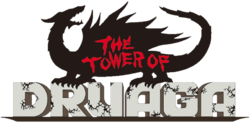
| |
| Developer(s) | Namco |
| Publisher(s) | Namco |
| Genre(s) | Action role-playing Maze |
| Console/platform of origin | Arcade |
| First installment | The Tower of Druaga (1984) |
| Latest installment | The Labyrinth of Druaga (2011) |
Babylonian Castle Saga (バビロニアン・キャッスル・サーガ, Babylonian Castle Saga) is a series of medieval maze-based action RPGs beginning with The Tower of Druaga, which spawned several sequel games and a spin-off anime series. Gil, the series' main protagonist, appears in Namco Roulette and as a downloadable costume for Mii Swordfighters. The Tower of Druaga's main theme and level complete theme appear in Namco Arcade '80s Retro Medley 1. The main theme from The Return of Ishtar, the direct sequel to The Tower of Druaga, appears in Namco Arcade '80s Retro Medley 2.
Baraduke
| Baraduke (universe) | |
|---|---|

| |
| Developer(s) | Namco Dempa |
| Publisher(s) | Namco Dempa |
| Genre(s) | Platformer Shooter |
| Console/platform of origin | Arcade |
| First installment | Baraduke (1985) |
| Latest installment | Bakutotsu Kijūtei: Baraduke II (1988) |
Baraduke (バラデューク, Baraduke) is a series of scrolling shooters that feature an astronaut rescuing docile aliens from hostile species. Although it was released a year earlier, the original game is noted for its similarities to Metroid; the player character, Kissy, is revealed to be a woman upon clearing the game. A friendly alien, Paccet, cameos in Namco Roulette.
Baten Kaitos
| Baten Kaitos (universe) | |
|---|---|

| |
| Developer(s) | Monolith Soft tri-Crescendo |
| Publisher(s) | Namco Nintendo |
| Genre(s) | Role-playing |
| Console/platform of origin | GameCube |
| First installment | Baten Kaitos: Eternal Wings and the Lost Ocean (2003) |
| Latest installment | Baten Kaitos Origins (2006) |
Baten Kaitos (バテン・カイトス, Baten Kaitos) is a card battle RPG series for the Nintendo GameCube developed by Monolith Soft and tri-Crescendo. While the first game, Baten Kaitos: Eternal Wings and the Lost Ocean, was published by Namco, the prequel, Baten Kaitos Origins, was published by Nintendo in all regions it released in.
A remix of the main battle theme from Origins, The valedictory elegy, plays on the Gaur Plain stage in Super Smash Bros. for Wii U.
Sagi, the main protagonist of Origins, and Milly, a party member from Origins, appear as spirits in Super Smash Bros. Ultimate. The Valedictory Elegy returns, now only playing on Summit, Duck Hunt, and stages from non-playable universes.
Bosconian
| Bosconian (universe) | |
|---|---|

| |
| Developer(s) | Namco |
| Publisher(s) | Namco Midway |
| Genre(s) | Shooter |
| Console/platform of origin | Arcade |
| First installment | Bosconian (1981) |
| Latest installment | Final Blaster (1990) |
Bosconian (ボスコニアン, Bosconian) is a series of free-roaming space shooters. The player's fighter cameos in Namco Roulette.
Bravoman
| Bravoman (universe) | |
|---|---|
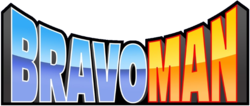
| |
| Developer(s) | Namco |
| Publisher(s) | Namco NEC |
| Genre(s) | Beat-'em-up Shooter |
| Console/platform of origin | Arcade |
| First installment | Bravoman (1988) |
| Latest installment | Bravoman: Binja Bash! (2013) |
Bravoman (ベラボーマン, Bravoman) is a comical action game that parodies typical superhero stories and cliches. In more recent years, it received both a web cartoon and a mobile game as part of ShiftyLook. The original Bravoman's title and first level music is featured as Bravoman Retro Medley.
Dragon Buster
| Dragon Buster (universe) | |
|---|---|
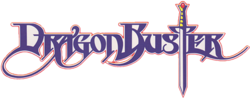
| |
| Developer(s) | Namco Dempa TOSE |
| Publisher(s) | Namco Dempa Enix |
| Genre(s) | Platformer Action role-playing |
| Console/platform of origin | Arcade |
| First installment | Dragon Buster (1985) |
| Latest installment | Dragon Valor (1999) |
Dragon Buster (ドラゴンバスター, Dragon Buster) is a series of medieval action RPGs with a platformer emphasis. The original game is notable for being the first game to include a double jump and a visual health meter. The protagonist, Clovis, cameos in Namco Roulette.
Dragon Spirit
| Dragon Spirit (universe) | |
|---|---|
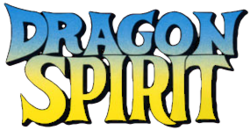
| |
| Developer(s) | Namco Consult Software Domark The Hit Squad |
| Publisher(s) | Namco Various |
| Genre(s) | Shooter |
| Console/platform of origin | Arcade |
| First installment | Dragon Spirit (1987) |
| Latest installment | Dragon Saber (1990) |
Dragon Spirit (ドラゴンスピリット, Dragon Spirit) is a series of dragon-based vertically scrolling shooters. The Area 1 theme from Dragon Spirit is remixed in Ultimate, and it also appears in its original form in Namco Arcade '80s Retro Medley 2.
Katamari
| Katamari (universe) | |
|---|---|
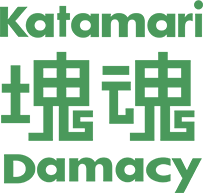
| |
| Developer(s) | Namco |
| Publisher(s) | Namco |
| Genre(s) | Third-person action Puzzle |
| Console/platform of origin | PlayStation 2 |
| First installment | Katamari Damacy (2004) |
| Latest installment | Katamari Damacy Reroll (2018) |
Katamari (塊魂, Clump Spirit) is a series of action-puzzle games in which the player controls the tiny Prince of All Cosmos, sent to Earth to roll up various objects into the titular sticky balls in order to recreate the stars in the sky, which were accidentally destroyed by the King of All Cosmos. A pixel version of the Prince (taken from the credits of Me and My Katamari) cameos in Namco Roulette in Ultimate. Debuting in 2004, Katamari is the newest Namco series to receive representation in Smash.
Coincidentally, Katamari Damacy Reroll, an HD remake of the original Katamari Damacy, was released on the same day as Super Smash Bros. Ultimate.
King & Balloon
| King & Balloon (universe) | |
|---|---|
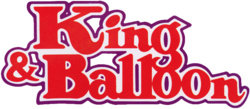
| |
| Developer(s) | Namco |
| Publisher(s) | Namco GamePlan |
| Genre(s) | Shooter |
| Console/platform of origin | Arcade |
| First installment | King & Balloon (1980) |
| Latest installment | King & Balloon (1980) |
King & Balloon (キング & バルーン, King & Balloon) is a fixed shooter game where the player must defend a king from hostile balloons, notable for being one of the earliest examples of sampled speech in video games. The King cameos in Namco Roulette in the 3DS version of SSB4 and Ultimate.
Libble Rabble
| Libble Rabble (universe) | |
|---|---|
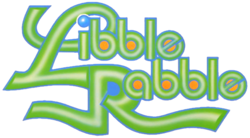
| |
| Developer(s) | Namco |
| Publisher(s) | Namco |
| Genre(s) | Action |
| Console/platform of origin | Arcade |
| First installment | Libble Rabble (1983) |
| Latest installment | Libble Rabble (1983) |
Libble Rabble (リブルラブル, Libble Rabble) is an action game involving harvesting mushrooms while avoiding enemies. The game was designed by Pac-Man creator, Tōru Iwatani. The bonus creature Topcup cameos in Namco Roulette, and the game's music is featured in Libble Rabble Retro Medley.
Mappy
| Mappy (universe) | |
|---|---|

| |
| Developer(s) | Namco Dempa Epoch Cangrejo Ideas Suzya and Cosmo Machia Inc. Rakuten Games HAUTECOUTURE Grateek |
| Publisher(s) | Namco Various |
| Genre(s) | Platformer |
| Console/platform of origin | Arcade |
| First installment | Mappy (1983) |
| Latest installment | Mini Mappy (2017) |
Mappy (マッピー, Mappy) is a series of platformer games based on a line of micromouse robots[1] starring the titular policemouse Mappy as he retrieves stolen goods from the literal cat burglar Goro and his goons, the Mewkies. The game's trampoline serves as the basis for Pac-Jump, and the functionality of Bonus Fruit's bell. The titular Mappy cameos in Namco Roulette. Mappy's main theme and level complete theme appear in Namco Arcade '80s Retro Medley 1, and Ultimate includes a remix of the game's music, Mappy Medley.
Metro-Cross
| Metro-Cross (universe) | |
|---|---|
| Developer(s) | Namco Various |
| Publisher(s) | Namco U.S. Gold |
| Genre(s) | Platformer |
| Console/platform of origin | Arcade |
| First installment | Metro-Cross (1985) |
| Latest installment | Metro-Cross (1985) |
Metro-Cross (メトロクロス, Metro-Cross) is a running-based platformer game where the player must escape a futuristic obstacle course before it self-destructs. The game's protagonist, Runner, cameos in Namco Roulette in the Wii U version of SSB4 and Ultimate, while the game's music is featured in Metro-Cross Retro Medley.
Rally-X
| Rally-X (universe) | |
|---|---|

| |
| Developer(s) | Namco |
| Publisher(s) | Namco Midway |
| Genre(s) | Maze Driving |
| Console/platform of origin | Arcade |
| First installment | Rally-X (1980) |
| Latest installment | Rally-X Rumble (2011) |
Rally-X (ラリーX, Rally-X) is a series of driving-based maze games. Rally-X was the debut of the Special Flag, which has become a major symbol of Namco. In addition to the item, the main theme and level complete theme from New Rally-X appear in Namco Arcade '80s Retro Medley 1. The player's car cameos in Namco Roulette.
Sky Kid
| Sky Kid (universe) | |
|---|---|
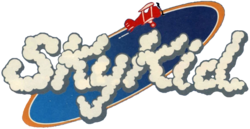
| |
| Developer(s) | Namco Epoch |
| Publisher(s) | Namco Epoch Sunsoft |
| Genre(s) | Shooter |
| Console/platform of origin | Arcade |
| First installment | Sky Kid (1985) |
| Latest installment | Sky Kid Deluxe (1986) |
Sky Kid (スカイキッド, Sky Kid) is a piloting-based scrolling shooter. The Red Baron player character cameos in Namco Roulette, and the game's music is featured in Sky Kid Retro Medley.
Taiko no Tatsujin
| Taiko no Tatsujin (universe) | |
|---|---|
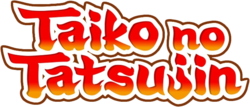
| |
| Developer(s) | Bandai Namco |
| Publisher(s) | Bandai Namco |
| Genre(s) | Rhythm |
| Console/platform of origin | Arcade |
| First installment | Taiko no Tatsujin (2001) |
| Latest installment | Taiko no Tatsujin: Nijiiro Version (2020) |
Taiko no Tatsujin (太鼓の達人, Taiko Master) is a series of drumming-based rhythm games that are particularly popular in Japan. The series' protagonist, Don-chan, cameos in Namco Roulette, and is the only Namco Roulette object not to be a sprite. Additionally, Gil's Trailer uses the Taiko no Tatsujin Wii: Do-Don to Nidaime! version of Symphonic Druaga.
Notably, Taiko no Tatsujin has previously crossed over with the Mario series in Mario Kart Arcade GP DX. Aside from including music from Pac-Man and other Namco series, the games have also featured songs from several franchises included in Smash, including Mario, Kirby, The Legend of Zelda, Pokémon, Splatoon, Mega Man, and Undertale.
Tales
- For the German smasher, see Smasher:Tales
- For the Chilean smasher, see Smasher:OZN~Tales
| Tales (universe) | |
|---|---|
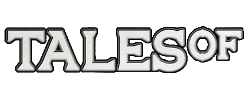
| |
| Developer(s) | Bandai Namco |
| Publisher(s) | Bandai Namco |
| Genre(s) | Role-playing |
| Console/platform of origin | Super Famicom |
| First installment | Tales of Phantasia (1995) |
| Latest installment | Tales of Crestoria (2020) |
Tales (テイルズ オブ, Tales of) is a long-running series of fantasy RPG games that are popular worldwide. The design of the main protagonist of Tales of Symphonia, Lloyd Irving, appears as a DLC costume for Mii Swordfighters.
Tekken
| Tekken (universe) | |
|---|---|
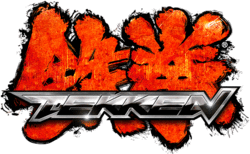
| |
| Developer(s) | Bandai Namco |
| Publisher(s) | Bandai Namco |
| Genre(s) | Fighting |
| Console/platform of origin | Arcade |
| First installment | Tekken (1994) |
| Latest installment | Tekken (Mobile) (2018) |
Tekken (鉄拳, Iron Fist) is a long-running series of 3D fighting games, centered around the feud among the members of the Mishima family. The series is represented in SSB4 and Ultimate through a downloadable content costume for Mii Brawlers based on Heihachi Mishima, a recurring antagonist in the series. In Ultimate, Heihachi also cameos as a sprite in Namco Roulette, using his sprite from Tekken Tag Tournament 2.
Coincidentally, costumes based on various Nintendo characters were available in the Wii U version of Tag Tournament 2 while Heihachi was a playable character in PlayStation All-Stars Battle Royale, Sony's equivalent to Super Smash Bros.
Thunder Ceptor
| Thunder Ceptor (universe) | |
|---|---|
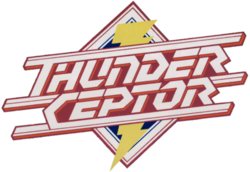
| |
| Developer(s) | Namco |
| Publisher(s) | Namco |
| Genre(s) | Shooter |
| Console/platform of origin | Arcade |
| First installment | Thunder Ceptor (1986) |
| Latest installment | 3-D Thunder Ceptor II (1986) |
Thunder Ceptor (サンダーセプター, Thunder Ceptor) is a series of pseudo-3D space shooters. The name entry theme from Thunder Ceptor appears in Namco Arcade '80s Retro Medley 2.
Valkyrie
| Valkyrie (universe) | |
|---|---|
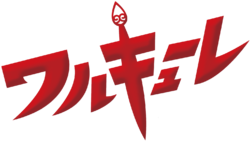
| |
| Developer(s) | Namco Nova Games Ltd. |
| Publisher(s) | Namco GamePlan |
| Genre(s) | Action-adventure Platformer |
| Console/platform of origin | Famicom |
| First installment | Valkyrie no Bōken: Toki no Kagi Densetsu (1986) |
| Latest installment | Valkyrie no Bōken: Toki no Kagi Densetsu with Xiaomu (2015) |
Valkyrie (ワルキューレ, Walküre) is a series of mythological action-adventure games. Valkyrie, the protagonist, cameos in Namco Roulette in the Wii U version of SSB4 and Ultimate, using her sprite from the second game in the series, The Legend of Valkyrie. The game's main theme also appears in Namco Arcade '80s Retro Medley 2.
Wonder Momo
| Wonder Momo (universe) | |
|---|---|
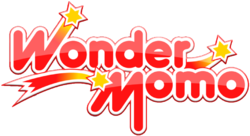
| |
| Developer(s) | Namco |
| Publisher(s) | Namco |
| Genre(s) | Beat-'em-up |
| Console/platform of origin | Arcade |
| First installment | Wonder Momo (1987) |
| Latest installment | Wonder Momo: Typhoon Booster (2014) |
Wonder Momo (ワンダーモモ, Wonder Momo) is a beat-'em-up game that acts as a light parody of tokusatsu stage shows. In recent years, the game was revived with a webcomic, an anime, and a mobile game. The transformation theme from Wonder Momo appears in Namco Arcade '80s Retro Medley 2.
Yokai Dochuki
| Yokai Dochuki (universe) | |
|---|---|

| |
| Developer(s) | Namco Now Production |
| Publisher(s) | Namco |
| Genre(s) | Platformer |
| Console/platform of origin | Arcade |
| First installment | Yokai Dochuki (1987) |
| Latest installment | Kyūkai Dōchūki (1990) |
Yokai Dochuki (妖怪道中記, Yōkai Travel Journal), originally known in English as Shadow Land, is an atypical platformer game in which Tarosuke, the protagonist, travels through the afterlife towards his ultimate fate. The game's music is featured in Yokai Dochuki Retro Medley.
Capcom series
Ghosts 'n Goblins
| Ghosts 'n Goblins | |
|---|---|
| Developer(s) | Capcom Micronics TOSE |
| Publisher(s) | Capcom |
| Genre(s) | Platformer |
| Console/platform of origin | Arcade |
| First installment | Ghosts 'n Goblins (1985) |
| Latest installment | Ghosts 'n Goblins Resurrection (2021) |
Ghosts 'n Goblins (魔界村, Demon Village) is a series of run-and-gun platformer video games developed by Capcom, following the adventures of a knight named Arthur and his quest to save a princess from various monsters. It is well known for its high difficulty.
Arthur was announced as a Mii Costume alongside returning Monster Hunter costumes during Mr. Sakurai Presents "Pyra/Mythra" on March 4th, 2021. A spirit of Arthur is also available for those who have save data from Ghosts 'n Goblins Resurrection in the system. He will be available to purchase from the Shop at a later date.
Resident Evil
| Resident Evil | |
|---|---|

| |
| Developer(s) | Capcom |
| Publisher(s) | Capcom |
| Genre(s) | Survival horror Third-person shooter First-person shooter |
| Console/platform of origin | PlayStation |
| First installment | Resident Evil (1996) |
| Latest installment | Resident Evil 3 (2020) |
Resident Evil (バイオハザード, Biohazard) is a series of survival horror shooters developed by Capcom. The main storyline of the series features various protagonists fighting against the Umbrella Corporation or people with connections to them, who has developed various deadly viruses creating zombies and nightmarish mutants.
In Super Smash Bros. Ultimate, four characters from the series, Chris Redfield, Leon Kennedy, Albert Wesker, and Jill Valentine, all appear as spirits. They were first released on November 29th, 2019 via the Spirit Board event Oust Resident Evil!.
Konami series
Getsu Fuma Den
| Getsu Fuma Den (universe) | |
|---|---|

| |
| Developer(s) | Konami |
| Publisher(s) | Konami |
| Genre(s) | Action role-playing |
| Console/platform of origin | Famicom |
| First installment | Getsu Fūma Den (1987) |
| Latest installment | Getsu Fūma Den (1987) |
Getsu Fuma Den (月風魔伝, The Legend of Getsu Fuma) is a side-scrolling action-adventure game released exclusively in Japan by Konami that was heavily similar to Castlevania II: Simon's Quest. The game follows Fuma, the surviving member of a trio of brothers, fighting to seek revenge on a demon that killed the rest of his family.
A music track from the game, Go! Getsu Fuma, appears on Dracula's Castle in Super Smash Bros. Ultimate, though it is its remixed rendition from Castlevania: Harmony of Despair. The original game is mentioned by name in the credits from the Sound Test.
Goemon
| Goemon (universe) | |
|---|---|
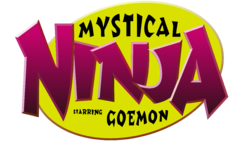
| |
| Developer(s) | Konami Hamster Corporation |
| Publisher(s) | Konami Hamster Corporation |
| Genre(s) | Action-adventure Platformer |
| Console/platform of origin | Arcade |
| First installment | Mr. Goemon (1986) |
| Latest installment | Arcade Archives Mr. Goemon (2015) |
Goemon (がんばれゴエモン, Go For It, Goemon!) is an action-adventure series made by Konami. Although Konami mostly regards the series as largely too culturally based to be released worldwide, several games have been released to the west: one for the Super NES (The Legend of the Mystical Ninja in 1991), two for the Nintendo 64 (Mystical Ninja Starring Goemon in 1997, and Goemon's Great Adventure in 1999), and two for the Game Boy (the first in 1991, as part of Konami GB Collection Vol. 3, and Mystical Ninja Starring Goemon in 1997, the former of which was released in Europe but not in America). The series is mainly action-adventure oriented, although the series has dipped its toes into other genres, such as role-playing games and puzzle games.
The main protagonist, the titular Goemon, appears in Super Smash Bros. Ultimate as a Mii Swordfighter Costume as part of Round 3.
Marvelous series
Daemon X Machina
| Daemon X Machina (universe) | |
|---|---|
| Developer(s) | Marvelous |
| Publisher(s) | Marvelous Nintendo Xseed Games |
| Genre(s) | Action Third-person shooter |
| Console/platform of origin | Switch |
| First installment | Daemon X Machina (2019) |
| Latest installment | Daemon X Machina (2019) |
Daemon X Machina (デモンエクスマキナ, Daemon X Machina) is a third-person shooter mecha video game. In the game, the player avatar pilots a mech known as an Arsenal as part of The Outers. In these mechs, the player fight against hostile AI turned haywire by energy radiating from the moon.
Four spirits of characters and their respective Arsenals were added via the Arsenals at the Ready! DAEMON X MACHINA Spirit Board event in Super Smash Bros. Ultimate. These include Radiant Gleam, Kloster (Grief), Bullet Walker (Brigadier General), and High Line (Guns Empress).
No More Heroes
| No More Heroes (universe) | |
|---|---|
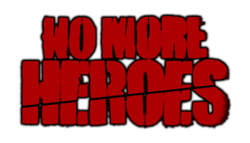
| |
| Developer(s) | Grasshopper Manufacture feelplus AQ Interactive |
| Publisher(s) | Grasshopper Manufacture Marvelous Various |
| Genre(s) | Action-adventure Hack and slash |
| Console/platform of origin | Wii |
| First installment | No More Heroes (2007) |
| Latest installment | Travis Strikes Again: No More Heroes (2019) |
No More Heroes (ノーモア★ヒーローズ, No More Heroes) is a series of action-adventure hack and slash games starring Travis Touchdown, who inadvertently becomes involved in the United Assassins Association and seeks to hunt down assassins of a higher rank to prevent other assassins from targeting him.
On October 3rd, 2020, it was announced that Travis Touchdown will be added to the game as a Mii Costume for the Mii Swordfighter.
Sega series
After Burner
| After Burner (universe) | |
|---|---|
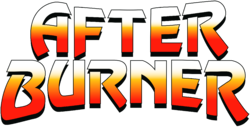
| |
| Developer(s) | Sega Various |
| Publisher(s) | Sega |
| Genre(s) | Combat flight simulator |
| Console/platform of origin | Arcade |
| First installment | After Burner (1987) |
| Latest installment | 3D After Burner II (2013) |
After Burner (アフターバーナー, After Burner) is a series of combat flight simulation games by Sega.
The series is represented in Super Smash Bros. for Wii U via a remix from the Bayonetta series titled After Burner (∞ Climax Mix), which plays on Umbra Clock Tower. It is also referenced through the name of Bayonetta's aerial side special, After Burner Kick.
After Burner (∞ Climax Mix) returns in Super Smash Bros. Ultimate on the same stage.
SNK series
Alpha Mission
| Alpha Mission (universe) | |
|---|---|
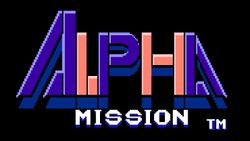
| |
| Developer(s) | SNK Hamster Corporation |
| Publisher(s) | SNK Hamster Corporation |
| Genre(s) | Shoot-'em-up |
| Console/platform of origin | Arcade |
| First installment | Alpha Mission (1985) |
| Latest installment | Arcade Archives Alpha Mission (2019) |
Alpha Mission (エー・エス・オー - アーマード・スクラム・オブジェクト, ASO: Armored Scrum Object) is a series of vertically-scrolling shoot-'em-up games created by SNK. Alpha Mission was released as an arcade game in 1985 and was later ported to the NES. A sequel, Alpha Mission II, was released in 1991 for the Neo Geo arcade and home systems. In the series, the player controls the fighter SYD against the deadly fleet of the Seven Star Alliance, attacking enemies in the air and on the ground.
A music track from the game, Theme of SYD, appears in Super Smash Bros. Ultimate.
Art of Fighting
| Art of Fighting (universe) | |
|---|---|
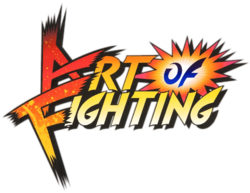
| |
| Developer(s) | SNK Hamster Corporation |
| Publisher(s) | SNK Hamster Corporation |
| Genre(s) | Fighting |
| Console/platform of origin | Arcade |
| First installment | Art of Fighting (1992) |
| Latest installment | Art of Fighting Anthology (2007) |
Art of Fighting (龍虎の拳, Fist of Dragon and Tiger) is series of 2D competitive fighting games created by SNK starting in 1992. This trilogy was the second fighting game series created by SNK after Fatal Fury: King of Fighters, and the first two games are prequels to the Fatal Fury series, being set between the late 1970s and early 1980s. It is based around the travels of its protagonist, Ryo Sakazaki, who is one of SNK's most prominent fighting game characters.
Ryo Sakazaki, Yuri Sakazaki, and King appear as background characters in the King of Fighters Stadium in Super Smash Bros. Ultimate, with Ryo also appearing as a Mii Brawler costume and spirit. Geese Howard's Spirit Battle also takes partly from his appearance as a secret boss in Art of Fighting 2. There are additionally two music tracks from the series: a remix of the series' main theme, titled ART of FIGHT - Art of Fighting, and the Fatal Fury Special rendition of the same song, titled Art of Fighting Ver.230000000.0 - FATAL FURY SPECIAL.
Athena
| Athena (universe) | |
|---|---|

| |
| Developer(s) | SNK Hamster Corporation |
| Publisher(s) | SNK Hamster Corporation |
| Genre(s) | Platformer |
| Console/platform of origin | Arcade |
| First installment | Athena (1986) |
| Latest installment | Arcade Archives Athena (2018) |
Athena (アテナ, Athena) is a series of action games developed by SNK and loosely inspired by Greek mythology. Its first game, Athena, released as an arcade game in 1986 and was later ported to the NES. The game is notorious for its high difficulty, but it became a hit due to the main character's bikini getup, which was unique to her at the time. In the series, Princess Athena runs away from her kingdom in search for adventure. Her descendant, Athena Asamiya, stars in later games, such as Psycho Soldier. Both Princess Athena and Athena Asamiya appear in The King of Fighters.
The music track for the first level of Athena, titled Forest World - Athena, appears in Super Smash Bros. Ultimate.
Ikari Warriors
| Ikari Warriors (universe) | |
|---|---|
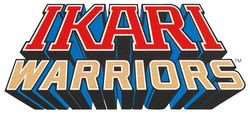
| |
| Developer(s) | SNK Hamster Corporation |
| Publisher(s) | SNK Hamster Corporation |
| Genre(s) | Run-and-gun |
| Console/platform of origin | Arcade |
| First installment | Ikari Warriors (1986) |
| Latest installment | Arcade Archives Ikari III -The Rescue- (2020) |
Ikari Warriors (怒, Fury) is a series of vertically-scrolling shooter games developed by SNK. The eponymous "Ikari Warriors", Ralf Jones and Clark Still (originally called Paul and Vince in the first game's Western release), are two mercenaries-for-hire who battle through enemies to reach the village of Ikari. The games were heavily influenced by the Rambo franchise. Both Ralf and Clark have continued to make appearances in The King of Fighters, and have appeared in Metal Slug as well since its sixth installment.
Both Ralf Jones and Clark Still appear as background characters in the King of Fighters Stadium in Super Smash Bros. Ultimate, as well as a shared spirit. The series is also represented with The King of Fighters XIV rendition of the theme "Ikari", titled IKARI - KOF XIV.
The King of Fighters
| The King of Fighters (universe) | |
|---|---|

| |
| Developer(s) | SNK Eolith Hamster Corporation |
| Publisher(s) | SNK Hamster Corporation |
| Genre(s) | Fighting |
| Console/platform of origin | Arcade |
| First installment | The King of Fighters '94 (1994) |
| Latest installment | The King of Fighters for Girls (2019) |
The King of Fighters (ザ・キング・オブ・ファイターズ, The King of Fighters) is a long-running fighting game series by SNK that combines characters from many of their different franchises, including Fatal Fury, Art of Fighting, Psycho Soldier, Samurai Shodown, and Ikari Warriors, as well as original characters. The series is known for its three-on-three team battles and extensive cast.
The eponymous tournament is notable for playing host to sinister forces working behind the scenes. They typically work to awaken an entity known as Orochi, an avatar of Earth who is bent on annihilating humanity for its continuous destruction of the planet. In the The King of Fighters '94 to '97, Orochi's followers attempt to awaken it to siphon its power for themselves. Following this, events from The King of Fighters '99 to 2001 feature a mysterious syndicate known as NESTS and their leader Igniz, who seeks to become the God of a new world. From The King of Fighters 2003 to The King of Fighters XIII, a group named Those from the Past and their leader Saiki attempt to resurrect Orochi in order to use him for their own objectives.
In Ultimate, The King of Fighters is treated as Terry's secondary universe; it forms the basis for his stage, King of Fighters Stadium, and five of the original characters from the series make cameos within the stage, those being Kyo Kusanagi, Iori Yagami, Goro Daimon, Chang Koehan, and Choi Bounge. Kyo and Iori also appear as spirits. Iori also appears as a Mii costume for the Mii Brawler. Several characters from other SNK franchises also appear on King of Fighters Stadium, using their designs from The King of Fighters series. Eighteen music tracks from many The King of Fighters installments are also available, in addition to four renditions of music tracks from the Fatal Fury and Ikari Warriors series.
Games with elements from or in the Super Smash Bros. series
The King of Fighters '94
- Playable Characters:
 Terry's main appearance, which features darker colors than his previous appearances in Fatal Fury, is based on his appearance here and, by proxy, the rest of the series throughout the 90's.
Terry's main appearance, which features darker colors than his previous appearances in Fatal Fury, is based on his appearance here and, by proxy, the rest of the series throughout the 90's.
- Stage Elements:
 Four characters that debuted in this game may appear in the background of the King of Fighters Stadium: Kyo Kusanagi, Goro Daimon, Chang Koehan, and Choi Bounge. In addition, all four have their appearances that debuted in this game.
Four characters that debuted in this game may appear in the background of the King of Fighters Stadium: Kyo Kusanagi, Goro Daimon, Chang Koehan, and Choi Bounge. In addition, all four have their appearances that debuted in this game. Ralf and Clark, two other characters that may back in the background of the King of Fighters Stadium, use their appearances from this game.
Ralf and Clark, two other characters that may back in the background of the King of Fighters Stadium, use their appearances from this game.
- Music:
 "Ne! - KOF '94": This game's theme for the Women Fighters team. Sourced from this game.
"Ne! - KOF '94": This game's theme for the Women Fighters team. Sourced from this game.
- Spirits:
The King of Fighters '95
- Stage Elements:
- Spirits:
The King of Fighters '96
- Stage Elements:
- Music:
 "Stormy Saxophone 2 - KOF '96": A remix of the theme for the Yagami team from this game.
"Stormy Saxophone 2 - KOF '96": A remix of the theme for the Yagami team from this game.
The King of Fighters '97
- Stage Elements:
- Spirits:
The King of Fighters '98
The King of Fighters '99
- Music:
 "176th Street - KOF '99": This game's theme for the Fatal Fury team. Sourced from this game.
"176th Street - KOF '99": This game's theme for the Fatal Fury team. Sourced from this game.
The King of Fighters 2000
- Playable Characters:
 Terry's yellow alternate costume derives from his C+D palette from this game.
Terry's yellow alternate costume derives from his C+D palette from this game.
- Music:
 "Terry115 - KOF 2000": This game's theme for the Fatal Fury team. Sourced from this game.
"Terry115 - KOF 2000": This game's theme for the Fatal Fury team. Sourced from this game.
The King of Fighters 2002
- Playable Characters:
 Terry's brown and green alternate costumes are derived from his heavy punch and heavy kick alternate palettes respectively from this game.
Terry's brown and green alternate costumes are derived from his heavy punch and heavy kick alternate palettes respectively from this game.
The King of Fighters XI
- Music:
 "Street Dancer - KOF XI": This game's theme for the Fatal Fury team. Sourced from this game.
"Street Dancer - KOF XI": This game's theme for the Fatal Fury team. Sourced from this game.
The King of Fighters XII
- Stages:
The King of Fighters 2002: Unlimited Match.
- Music:
 "DESERT REQUIEM ~Operation02UM~ - KOF 2002 UM": This game's theme for the Ikari Warriors team. Sourced from this game.
"DESERT REQUIEM ~Operation02UM~ - KOF 2002 UM": This game's theme for the Ikari Warriors team. Sourced from this game. "ESAKA!! - KOF 2002 UM": This game's theme for the Japan team. Sourced from this game.
"ESAKA!! - KOF 2002 UM": This game's theme for the Japan team. Sourced from this game. "KD-0079+ - KOF 2002 UM": This game's theme for the K' team. Sourced from this game.
"KD-0079+ - KOF 2002 UM": This game's theme for the K' team. Sourced from this game. "Undercover - KOF 2002 UM": This game's theme for the Agent team. Sourced from this game.
"Undercover - KOF 2002 UM": This game's theme for the Agent team. Sourced from this game. "Cutting Edge - KOF 2002 UM": The track played when fighting Krizalid. Sourced from this game.
"Cutting Edge - KOF 2002 UM": The track played when fighting Krizalid. Sourced from this game.
The King of Fighters XIII
- Music:
 "The Second Joker - KOF XIII": The track played when fighting Ash Crimson. Sourced from this game.
"The Second Joker - KOF XIII": The track played when fighting Ash Crimson. Sourced from this game. "Esaka Continues... - KOF XIII": This game's theme for the Japan team. Sourced from this game.
"Esaka Continues... - KOF XIII": This game's theme for the Japan team. Sourced from this game. "Wild Street - KOF XIII": This game's theme for the Fatal Fury team. Sourced from this game.
"Wild Street - KOF XIII": This game's theme for the Fatal Fury team. Sourced from this game. "Tame a Bad Boy - KOF XIII": This game's theme for the Kim team. Sourced from this game.
"Tame a Bad Boy - KOF XIII": This game's theme for the Kim team. Sourced from this game. "KDD-0063 - KOF XIII": This game's theme for the K' team. Sourced from this game.
"KDD-0063 - KOF XIII": This game's theme for the K' team. Sourced from this game.
The King of Fighters XIV
- Playable Characters:
 Terry's voice actor from this game, Takashi Kondō, reprises his role as Terry.
Terry's voice actor from this game, Takashi Kondō, reprises his role as Terry. The "Hungry Wolf" logo on the hat Terry wears for his yellow alternate costume comes from this game.
The "Hungry Wolf" logo on the hat Terry wears for his yellow alternate costume comes from this game. Terry's Triple Wolf incorporates Terry's unique voice lines for an EX Buster Wolf from this game.
Terry's Triple Wolf incorporates Terry's unique voice lines for an EX Buster Wolf from this game.
- Stages:
- Stage Elements:
- Music:
 "Kuri Kinton Flavor - KOF XIV": The track that plays on the Transcontinental Railroad stage. Sourced from this game.
"Kuri Kinton Flavor - KOF XIV": The track that plays on the Transcontinental Railroad stage. Sourced from this game. "Soy Sauce for Geese - KOF XIV": The track that plays whenever Terry Bogard and Geese Howard fight against one another. Sourced from this game.
"Soy Sauce for Geese - KOF XIV": The track that plays whenever Terry Bogard and Geese Howard fight against one another. Sourced from this game. "W.W.III - KOF XIV": Whip's theme in this game. Sourced from this game.
"W.W.III - KOF XIV": Whip's theme in this game. Sourced from this game. "New Order - KOF XIV": The track that plays whenever Kyo Kusanagi and Iori Yagami fight against one another. Sourced from this game.
"New Order - KOF XIV": The track that plays whenever Kyo Kusanagi and Iori Yagami fight against one another. Sourced from this game. "Yappari ESAKA - KOF XIV": This game's theme for the Japan team. Sourced from this game.
"Yappari ESAKA - KOF XIV": This game's theme for the Japan team. Sourced from this game. "Departure from South Town - KOF XIV": This game's theme for the Fatal Fury team. Sourced from this game.
"Departure from South Town - KOF XIV": This game's theme for the Fatal Fury team. Sourced from this game. "IKARI - KOF XIV": The track that plays whenever Ralf Jones and Clark Still fight against one another. Sourced from this game.
"IKARI - KOF XIV": The track that plays whenever Ralf Jones and Clark Still fight against one another. Sourced from this game.
Metal Slug
| Metal Slug (universe) | |
|---|---|
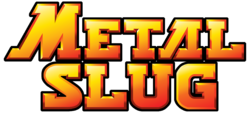
| |
| Developer(s) | Nazca Corporation SNK Hamster Corporation |
| Publisher(s) | Nazca Corporation SNK Hamster Corporation |
| Genre(s) | Run-and-gun |
| Console/platform of origin | Arcade |
| First installment | Metal Slug (1996) |
| Latest installment | Metal Slug Infinity (2019) |
Metal Slug (メタルスラッグ, Metal Slug) is a series of run-and-gun shooters. Known for their fluid animation and two-player co-op gameplay, the series involves a small team of soldiers called the Peregrine Falcons and the SPARROWS under the command of the Regular Army as they traveling the world to defeat mysterious enemy factions (most notably the military madman General Morden and the Rebel Army and the alien invaders known as Mars People, though in Metal Slug 5 the main enemies are the mysterious Ptolemaic Army and in Metal Slug 6 the Rebel army and the Mars People made a alliance with the Peregrine Falcons to stand over the outbreak of a new alien invasion knows as The Invaders), wielding semi-automatic handguns and a small tank known as SV-001 (the eponymous "Metal Slug"). As each stage progresses, they acquire more powerful weapons and tanks until confronting the final enemy. The characters of Metal Slug make common appearances in The King of Fighters, and starting with Metal Slug 6, the series also crosses over with Ikari Warriors.
Metal Slug is represented in Smash Ultimate through five music tracks playable on the King of Fighters Stadium stage: Main Theme of Metal Slug - METAL SLUG, Assault Theme - METAL SLUG 1-3, Final Attack - METAL SLUG 1-6, Judgment - METAL SLUG 2, and Blue Water Fangs (The Island of Dr. Moreau) - METAL SLUG 3.
Psycho Soldier
| Psycho Soldier (universe) | |
|---|---|
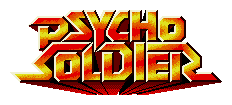
| |
| Developer(s) | SNK Hamster Corporation |
| Publisher(s) | SNK Hamster Corporation |
| Genre(s) | Action platformer |
| Console/platform of origin | Arcade |
| First installment | Psycho Soldier (1987) |
| Latest installment | Arcade Archives Psycho Soldier (2019) |
Psycho Soldier (サイコ・ソルジャー, Psycho Soldier) is an action platformer game developed by SNK and was released in arcades in 1987. It is the successor game to Athena, starring Athena Asamiya, a Japanese schoolgirl descendant of the similarly-named goddess who uses her psychokinetic powers to fight an alien invasion alongside the Chinese youngster Sie Kensou. It is notable for being the first video game to feature a theme song with sampled lyrics.
Athena Asamiya appears as a background character in King of Fighters Stadium using her design from King of Fighters '95, as well as a spirit, using her original game artwork. The Psycho Soldier Theme is also covered in both Japanese and English, with the latter being the first English version since its original release.
Samurai Shodown
| Samurai Shodown (universe) | |
|---|---|

| |
| Developer(s) | SNK Hamster Corporation |
| Publisher(s) | SNK Hamster Corporation |
| Genre(s) | Fighting |
| Console/platform of origin | Arcade |
| First installment | Samurai Shodown (1993) |
| Latest installment | Samurai Shodown NeoGeo Collection (2020) |
Samurai Shodown (サムライスピリッツ, Samurai Spirits) is a weapon-based fighting game series made by SNK. The games are set in Japan in the late 18th century, involving the main protagonist Haohmaru and various other characters doing battle against dark forces threatening to spread their evil into the mortal world, such as the malevolent deity Ambrosia, who manipulates extremists like the sorcerer Shiro Amakusa to do its bidding. The earlier titles in the series are also well-known for their poor English translations at times. Despite the name of the series, most of the characters are not samurai in the traditional sense.
In Super Smash Bros. Ultimate, Nakoruru appears as a Mii costume for the Mii Swordfighter, and she appears as a spirit along with Haohmaru. The series is also represented with three music tracks from the first installment: Tuna, Banquet of Nature, and Gaia.
Square Enix series
Bravely Default
| Bravely Default (universe) | |
|---|---|

| |
| Developer(s) | Silicon Studio Claytechworks |
| Publisher(s) | Square Enix Nintendo |
| Genre(s) | Role-playing |
| Console/platform of origin | 3DS |
| First installment | Bravely Default (2012) |
| Latest installment | Bravely Default II (2021) |
Bravely Default (ブレイブリーデフォルト, Bravely Default) is a series of role-playing games developed by Silicon Studio and published by Square Enix in Japan, with Nintendo publishing in all other regions. Originally conceived as a sequel to Final Fantasy: The 4 Heroes of Light, the connections to the Final Fantasy franchise were eventually dropped in favor of original characters and settings. Battles are turn based, with the unique twist of being able to brave or default every turn. Brave Points (BP) must be spent to attack, or "Brave" enemies, and more available BP means more chances to attack. The player can even go into negative BP, but are then unable to perform any action until the BP balance reaches 0 again. BP will restore naturally, or the player can choose to "Default," which reduces damage taken and replenishes BP quicker. The game also utilizes a job system to give characters special abilities in battle
On February 23, 2021, it was announced that spirits from Bravely Default II, the third game in the series, would be added to the Spirit Board in a Spirit Board event simply titled BRAVELY DEFAULT II on February 26 as a tie-in to the game's release. All four protagonists are available in pairs: Seth & Gloria and Elvis & Adelle.
Mana
| Mana (universe) | |
|---|---|

| |
| Developer(s) | Square Enix Square Brownie Brown |
| Publisher(s) | Square Enix Square Nintendo |
| Genre(s) | Action role-playing |
| Console/platform of origin | Game Boy |
| First installment | Final Fantasy Adventure (1991) |
| Latest installment | Trials of Mana (2020) |
Mana (聖剣伝説, The Legend of the Sacred Sword) is a series of action role-playing games made by Square Enix (formerly Squaresoft). The series was developed as a supplemental storyline to Final Fantasy, but elements of that series were dropped from the second installment, Secret of Mana, onwards. The series often revolves around the Mana Tree, the Mana Sword, and the forces trying to steal and harness its power. The series is considered a pioneer of the action RPG genre with the introduction of a real-time battle system reminiscent of top-down The Legend of Zelda games.
On April 21, 2020, it was announced that spirits from the 2020 remake of Trials of Mana would be added to the Spirit Board in The Spirits of Mana event on April 24 as a tie-in to the remake's release on the same day. All six protagonists are featured in three pairs: Duran & Angela, Kevin & Charlotte, and Hawkeye & Riesz, with each pairing representing one of the three storylines of Trials of Mana.
Octopath Traveler
| Octopath Traveler (universe) | |
|---|---|

| |
| Developer(s) | Square Enix Division 11 Acquire |
| Publisher(s) | Square Enix Nintendo |
| Genre(s) | Role-playing |
| Console/platform of origin | Switch |
| First installment | Octopath Traveler (2018) |
| Latest installment | Octopath Traveler: Champions of the Continent (2020) |
Octopath Traveler (オクトパス トラベラー, Octopath Traveler) is a turn-based role-playing game developed by Square Enix and Acquire, conceived from the same producer who previously worked on the Bravely Default series on Nintendo 3DS. In the game, the player controls a set of eight characters (Ophilia, Cyrus, Tressa, Olberic, Primrose, Alfyn, Therion, and H'aanit, their first names spelling out O-C-T-O-P-A-T-H) through the land of Orsterra, with each character having their own storyline, archetype, and abilities. The game has an "HD-2D" diorama art-style for the backgrounds with sprites used for the characters both in and out of battle. The original game is among the top twenty-five best selling titles on Nintendo Switch with over two million copies sold, and a prequel, Octopath Traveler: Champions of the Continent, released on October 28, 2020.
On July 7, 2020, it was revealed that spirits featuring the eight playable characters in Octopath Traveler would be added to the Spirit Board in Second Anniversary of OCTOPATH TRAVELER on July 10. The spirits would see each of the eight playable characters split into four pairs, these pairs being Olberic & Primrose, Tressa & Cyrus, Alfyn & Therion, and H'aanit & Ophilia.
Ubisoft series
Assassin's Creed
| Assassin's Creed (universe) | |
|---|---|

| |
| Developer(s) | Ubisoft |
| Publisher(s) | Ubisoft |
| Genre(s) | Action-adventure |
| Console/platform of origin | Xbox 360 PlayStation 3 |
| First installment | Assassin's Creed (2007) |
| Latest installment | Assassin's Creed Valhalla (2020) |
Assassin's Creed (アサシンクリード, Assassin Creed) is a series of stealth action-adventure games developed by Ubisoft. The series follows the millennia-long clash between two factions: the Assassins and the Knights Templar, as Desmond Miles experiences the life of his ancestors to uncover their hidden secrets in the (then) near-future of 2012.
On January 16th, 2020, it was confirmed that Altaïr would be a Mii Costume for the Mii Swordfighter as part of Round 5 of DLC.
Rabbids
| Rabbids (universe) | |
|---|---|
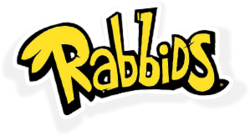
| |
| Developer(s) | Ubisoft |
| Publisher(s) | Ubisoft |
| Genre(s) | Party |
| Console/platform of origin | Game Boy Advance |
| First installment | Rayman Raving Rabbids (2006) |
| Latest installment | Rabbids Coding! (2019) |
Rabbids (ラビッツ・パーティー, Rabbits Party; Lapins Crétins (Moronic Rabbits) in French) is a multimedia franchise that began as a spinoff of the Rayman series before branching off into its own separate universe. The series follows the various antics of the titular Rabbids, a race of crazed rabbit-like creatures that spout gibberish and cause mischief wherever they go. The Rabbids series and the Super Mario series crossed over in the turn-based strategy game Mario + Rabbids Kingdom Battle, in which a device called the "SupaMerge" hits the Rabbids' Time-Washing Machine and transports them to the Mushroom Kingdom, merging them with various objects found therein.
Rabbid Mario, Rabbid Peach, and Rabbid Kong from Kingdom Battle appear as spirits in Super Smash Bros. Ultimate, with the latter using his design from Kingdom Battle's "Donkey Kong Adventure" DLC expansion. Additionally, on January 16th, 2020, it was confirmed that Rabbids headgear would be a Mii Costume as part of Round 5 of DLC.
Rayman
| Rayman (universe) | |
|---|---|

| |
| Developer(s) | Ubisoft |
| Publisher(s) | Ubisoft Gameloft Feral Interactive Nintendo |
| Genre(s) | Platformer |
| Console/platform of origin | Atari Jaguar |
| First installment | Rayman (1995) |
| Latest installment | Rayman Mini (2019) |
Rayman (レイマン, Rayman) is a platformer franchise focusing on the limbless hero Rayman as he protects his world against everything from robot pirates to psychotic bunnies.
The titular character, alongside his best friend Globox and the barbarian princess Barbara from Rayman Legends, appear as trophies in Super Smash Bros. for Wii U.
Rayman returns as a spirit in Super Smash Bros. Ultimate.
Others
BIT.TRIP
| BIT.TRIP (universe) | |
|---|---|
| Developer(s) | Gaijin Games Choice Provisions |
| Publisher(s) | Aksys Games Arc System Works Gaijin Games Choice Provisions |
| Genre(s) | Music |
| Console/platform of origin | Wii (WiiWare) |
| First installment | BIT.TRIP BEAT (2009) |
| Latest installment | Runner3 (2018) |
BIT.TRIP is a series of rhythm games by independent developer Gaijin Games (now known as Choice Provisions) starring an entity known as CommanderVideo.
CommanderVideo appears in Super Smash Bros. for Wii U as a trophy, using his three-dimensional appearance from BIT.TRIP Presents...Runner2: Future Legend of Rhythm Alien. This marks BIT.TRIP as the first series created by an independent developer to be represented in Smash.
Culdcept
| Culdcept (universe) | |
|---|---|

| |
| Developer(s) | OmiyaSoft |
| Publisher(s) | Various Sega Namco Nintendo |
| Genre(s) | Board game |
| Console/platform of origin | Sega Saturn |
| First installment | Culdcept (1997) |
| Latest installment | Culdcept Revolt (2016) |
Culdcept (カルドセプト, Culdcept) is a series of card collecting board games released on multiple consoles with different publishers, such as Sega, Namco Bandai, and Nintendo.
The character Goligan appears as a trophy in Super Smash Bros. for Nintendo 3DS. A remix of the title theme from the first 3DS installment, known simply as Culdcept, plays on the Boxing Ring stage in Super Smash Bros. for Wii U.
Goligan returns as a spirit in Super Smash Bros. Ultimate, as well as Culdra, the goddess and mascot of the series, and Allen, the main protagonist of Culdcept Revolt. The Culdcept track returns. Additionally, two tracks from Culdcept Revolt are added, Revolt -Striving for Hope- and Worthy Rival Battle. All three tracks only play on Summit, Duck Hunt, and stages from non-playable universes.
Cuphead
| Cuphead (universe) | |
|---|---|

| |
| Developer(s) | StudioMDHR |
| Publisher(s) | StudioMDHR |
| Genre(s) | Run-and-gun platformer |
| Console/platform of origin | Xbox One Microsoft Windows |
| First installment | Cuphead (2017) |
| Latest installment | Cuphead: Tesla Edition (2019) |
Cuphead (カップヘッド, Cuphead) is a 2D sidescrolling run-and-gun platformer developed by the Canada-based StudioMDHR and inspired by series such as Contra, Gunstar Heroes, and Gradius. Notably, the art style is rooted in 1930s rubber-hose cartoons inspired by the works of Disney and Fleischer Studios. The story follows two brothers, Cuphead and Mugman, who lost their souls in a bet with the Devil and are sent on a quest to collect the soul contracts of debtors across their homeland, Inkwell Isle, in order to save their own souls.
On January 16th, 2020, it was announced that Cuphead would be a Mii Fighter Costume for the Mii Gunner as part of Round 5 of DLC. The Mii Costume is bundled with the music track Floral Fury, the boss theme for Cagney Carnation. Later, on February 11th, 2020, it was announced that the Spirit Board event Ready? Wallop! would start on February 14th of the same year, featuring spirits for Cuphead, Mugman, King Dice, and the Devil.
Fallout
| Fallout (universe) | |
|---|---|

| |
| Developer(s) | Bethesda Softworks Interplay Productions Obsidian Entertainment |
| Publisher(s) | Bethesda Softworks Interplay Productions |
| Genre(s) | First-person shooter Role-playing |
| Console/platform of origin | MS-DOS Microsoft Windows |
| First installment | Fallout (1997) |
| Latest installment | Fallout Shelter Online (2020) |
Fallout is a series of role-playing games developed by Interplay Entertainment (later Bethesda Softworks). The series revolves around an alternate timeline America that has been ravaged by nuclear war and follows the story of the survivors living their lives in the apocalyptic wastelands. The series started as top-down, turn-based role-playing games with an isometric view and has evolved to feature first-person shooter elements since Fallout 3.
On June 22nd, 2020, it was announced that Vault Boy, the mascot of the series, will be added to the game as a Mii Costume for the Mii Gunner.
Glory of Heracles
| Glory of Heracles (universe) | |
|---|---|

| |
| Developer(s) | Data East Paon |
| Publisher(s) | Data East Paon Nintendo |
| Genre(s) | Role-playing |
| Console/platform of origin | Famicom |
| First installment | Tōjin Makyō Den: Heracles no Eikō (1987) |
| Latest installment | Glory of Heracles (2008) |
Glory of Heracles (ヘラクレスの栄光, Glory of Heracles) is an RPG series based on the Greek myth of Heracles which was originally a Japan-only series released for the Famicom, Super Famicom, and Game Boy by Data East. After Data East went bankrupt in 2003, Paon acquired the rights and revived the series with Glory of Heracles: Proof of the Soul for the Nintendo DS, which would later release in North America as Glory of Heracles.
A remix of two music tracks from Proof of the Soul, under the title Glory of Heracles, plays on the Coliseum stage appears in Super Smash Bros. for Wii U.
The main protagonist of Proof of the Soul, as well as Heracles himself (also based on his appearance in Proof of the Soul), both appear as spirits in Super Smash Bros. Ultimate. The Glory of Heracles track returns, now only playing on Summit, Duck Hunt, and stages from non-playable universes.
River City
| River City (universe) | |
|---|---|
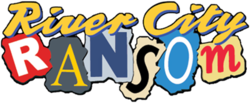
| |
| Developer(s) | Technōs Japan Atlus Arc System Works |
| Publisher(s) | Taito Technōs Japan Atlus Arc System Works |
| Genre(s) | Beat 'em up Sports |
| Console/platform of origin | Arcade |
| First installment | Renegade (1986) |
| Latest installment | Stay Cool, Kobayashi-san!: A River City Ransom Story (2019) |
River City (くにおくん, Kunio-kun) is a beat 'em up and sports game series made by Technōs Japan, which is now handled by Arc System Works. The series stars the titular Kunio (known as Alex in River City Ransom, the Western localization of Downtown Nekketsu Monogatari), beating his way through dangerous gangs or competing in sports, often joined by his friendly rival Riki (Ryan in River City Ransom).
Four spirits from the River City franchise were added to the Spirit Board during the Spirit Board event River City Smash in Super Smash Bros. Ultimate. The event started on January 24th, 2020 and ended on January 28th of the same year. Notably, the characters appear with their original Japanese names and appearances across all versions rather than using their localized names.
Shantae
| Shantae (universe) | |
|---|---|
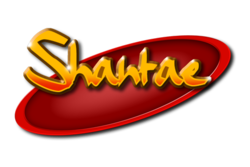
| |
| Developer(s) | WayForward Technologies |
| Publisher(s) | Capcom WayForward Technologies |
| Genre(s) | Platformer Metroidvania |
| Console/platform of origin | Game Boy Color |
| First installment | Shantae (2002) |
| Latest installment | Shantae and the Seven Sirens (2019) |
Shantae (シャンティ, Shantae) is a series of action platformers developed by WayForward Technologies that star the titular character, Shantae, a half-genie half-human girl who can use her long hair to attack enemies, unlock new abilities and weapons with progression, and transform into different animals by belly dancing.
Both the protagonist and recurring antagonist of the series, Shantae and Risky Boots respectively, appear as spirits in Super Smash Bros. Ultimate using their artwork from the fourth installment, Shantae: Half-Genie Hero.
Tetris
| Tetris (universe) | |
|---|---|

| |
| Developer(s) | Alexey Pajitnov Various |
| Publisher(s) | Nintendo Various |
| Genre(s) | Puzzle |
| Console/platform of origin | Electronika 60 |
| First installment | Tetris (1984) |
| Latest installment | Tetris 99 (2019) |
| Article on Hard Drop Tetris Wiki | Tetris (universe) |
Tetris (テトリス, Tetris; Тетрис in Russian) is a tile-matching puzzle video game series created by Alexey Pajitnov that released on various consoles over the years. It is perhaps most famous for its iteration on the original Game Boy, which was a pack-in title for the handheld, and propelled it to instant commercial and critical success.
Both Tetris: Type A and Tetris: Type B from the Game Boy version appear in Super Smash Bros. Brawl as music for the Luigi's Mansion stage.
Tetris: Type A returns in Super Smash Bros. for Nintendo 3DS, but only as a track for Smash Run. In Super Smash Bros. for Wii U, both tracks reappear. While Tetris: Type A still plays in the Luigi's Mansion stage like in Super Smash Bros. Brawl, Tetris: Type B is moved to the Wuhu Island stage.
Tetris: Type A and Tetris: Type B both return in Super Smash Bros. Ultimate, now only playing on Summit, Duck Hunt, and stages from non-playable universes. Five spirits depicting different Tetrimino shapes were also added via the Attack of the Tetriminos! Spirit Board event. The singular spirits include the I, T, and O shapes, while shared spirits include the S & Z shapes and the L & J shapes.
The Tower
| The Tower (universe) | |
|---|---|
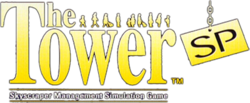
| |
| Developer(s) | OPeNBooK Vivarium |
| Publisher(s) | OPeNBooK Maxis Nintendo Sega |
| Genre(s) | Construction and Management simulation |
| Console/platform of origin | Macintosh System 7 |
| First installment | SimTower: The Vertical Empire (1994) |
| Latest installment | The Tower for iPhone (2011) |
The Tower (ザ・タワー, The Tower) is a series of construction and management simulator games in which the player builds and manages the operations of a modern, multi-use skyscraper. The North American release of the first game, The Tower, was localized by Maxis as a part of the Sim series, titled SimTower: The Vertical Empire.
Yama, the boss from the Game Boy Advance installment, The Tower SP, appears as a spirit in Super Smash Bros. Ultimate.
The Wonderful 101
| The Wonderful 101 (universe) | |
|---|---|

| |
| Developer(s) | PlatinumGames |
| Publisher(s) | Nintendo PlatinumGames |
| Genre(s) | Action-adventure |
| Console/platform of origin | Wii U |
| First installment | The Wonderful 101 (2013) |
| Latest installment | The Wonderful 101: Remastered (2020) |
The Wonderful 101 (ザ・ワンダフル・ワン・オー・ワン, The Wonderful 101) is an action game developed by PlatinumGames. Players take control of a team of masked superheroes, known as the Wonderful 100 (pronounced One-Double Oh), to save Earth from GEATHJERK, a legion of alien invaders. By using the stylus (or right stick) to draw shapes, the player can have the heroes join together to assume a variety of forms known as "Unite Morphs" to combat enemies and solve puzzles.
The main character, Wonder-Red, and the six other main Wonderful Ones all appear as trophies in Super Smash Bros. for Wii U. Two tracks from the game are also featured: ST01: Roll Out, Wonderful 100! plays on the Pilotwings stage, and Jergingha - Planet Destruction Form plays on the Mario Galaxy stage.
Wonder-Red and Wonder-Blue both return as spirits in Super Smash Bros. Ultimate. ST01: Roll Out, Wonderful 100! and Jergingha - Planet Destruction Form both return, now only playing on Summit, Duck Hunt, and stages from non-playable universes.
Undertale
| Undertale (universe) | |
|---|---|
| Developer(s) | Toby Fox 8-4 |
| Publisher(s) | Toby Fox 8-4 |
| Genre(s) | Role-playing |
| Console/platform of origin | Microsoft Windows Apple OS X |
| First installment | Undertale (2015) |
| Latest installment | Deltarune: Chapter 1 (2018) |
Undertale, officially stylized as UNDERTALE, is an indie role-playing game created by Toby Fox. In the game, the player traverses an underground world full of quirky monsters and can either befriend or murder them, with different choices resulting in different endings.
One of the major characters encountered, Sans, appears as a downloadable Mii Gunner costume in Super Smash Bros. Ultimate as part of Round 3. The costume also comes with a new arrangement of his boss theme MEGALOVANIA as a DLC music track, only playing on stages with music listed in the "Other" category.
Warframe
| Warframe (universe) | |
|---|---|

| |
| Developer(s) | Digital Extremes Panic Button |
| Publisher(s) | Digital Extremes |
| Genre(s) | Third-person shooter Action role-playing |
| Console/platform of origin | Microsoft Windows |
| First installment | Warframe (2013) |
| Latest installment | Warframe (2013) |
Warframe is a free-to-play cooperative third-person shooter/action role-playing game made by Digital Extremes. It follows a member of the Tenno, an ancient warrior race, who awakens from a centuries-long cyrosleep to find their planetary system at war with each other. The Tenno use bio-mechanical suits, the eponymous Warframes, along with various weapons to attack their enemies, including the militaristic Grineer Empire, the plutocratic Corpus mercantile, the techno-organic Infested, and the corruption of the ancient Orokin Empire.
The player's guide, the Lotus, and Natah both appear as spirits in Super Smash Bros. Ultimate, released in the spirit event Spirits in Black.
Dependent universes
Dependent universes are universes that are technically represented in some form in the Super Smash Bros. franchise, but are not considered their own series.
- Anarchy Reigns is an open world beat 'em up game developed by PlatinumGames and published by Sega. The fighter spirit artwork of Bayonetta from the first Bayonetta game, as well as some of her alternate costumes, come from this game.
- Dance Dance Revolution is a series of dance rhythm games by Konami and one of many franchises developed by Bemani. A sticker of Bowser uses artwork from Dance Dance Revolution: Mario Mix. Mario's down smash in Ultimate also resembles his breakdancing on that game's cover art, as opposed to just his leg sweep from Super Mario 64 as it was prior.
- DreamMix TV World Fighters is a crossover fighting video game published by Hudson and developed by Bitstep. Simon Belmont received his Japanese voice actor in Hideo Ishikawa through this game.
- Eggerland is a series of puzzle games developed by HAL Laboratory. The games' main protagonists Lolo and Lala served as direct inspiration for the Lololo and Lalala characters from the Kirby series, who appear on their door on the Mt. Dedede Boss Rush Lobby phase in Dream Land GB.
- Final Fight is a series of beat-em-up games made by Capcom. Cody, one of the series' protagonists, appears as a playable character in several Street Fighter games and receives a spirit in Ultimate, referencing his appearance in Street Fighter Alpha 3.
- Flicky is an arcade platformer made by Sega. Flicky, the game's eponymous character, is the basis of the Flicky animal friends from Sonic the Hedgehog, which appear on Windy Hill Zone and as part of a trophy in SSB4.
- The Halloween Hack is an unofficial ROM hack of EarthBound created by Toby Fox, who would later go on to create Undertale. The music track MEGALOVANIA made its debut in this ROM hack.
- Killer Instinct is a fighting game franchise created by Rare. The music track Funky's Fugue was originally written for an internal update video for the first game in the series. It was later repurposed for Donkey Kong Country.[2]
- Kingdom Hearts is an RPG series developed by Square Enix and is a crossover of said company and The Walt Disney Company. The first Kingdom Hearts game marked the debut of Takahiro Sakurai as the consistent voice of Cloud Strife. Some of Sephiroth's moves (like Shadow Flare) were adopted from this series by Dissidia Final Fantasy, which then became the basis for their Smash appearance. Aerith's name was Re-Translated to better match her Japanese name. Additionally, Sephiroth's one wing debuted in the original game; it was derived from the title of his battle theme in Final Fantasy VII, "One-Winged Angel", which reappears throughout the series and in other Compilation of Final Fantasy VII installments as Sephiroth's general theme.
- Legend of the Chambered is an action RPG developed by Notch, the creator of Minecraft. Many of the sprites used for the weapons and armor in Minecraft originated in this game, and were later reused.
- Lode Runner is a 2D puzzle-platform game, published by Broderbund and developed by Hudson Soft. Bomberman's current design is based on the enemies from the NES version of this game.
- Marvel vs. Capcom is a fighting game series featuring characters owned by Capcom and Marvel Comics. Mega Man's up tilt is based on the Mega Upper from this series[3], and Ken's Shinryuken is based on its incarnation from this series,[4] although neither originate from the series. The series is also indirectly referenced by Palutena's Guidance in the conversation about Ryu.
- Meteos is a series of puzzle games developed by Masahiro Sakurai and originally released for the Nintendo DS. The X Bomb's behavior in the Super Smash Bros. series is similar to that of the item of the same name in Meteos, in which it explodes in a cross shape rather than exhibit its behavior from Kid Icarus: Uprising.
- Mystery Dungeon is a series of roguelike and role-playing games developed primarily by Spike Chunsoft. While the Chocobo's cartoonish design is unique to Final Fantasy's Chocobo subseries, its design for the Mii Costume is based on the latest title of the Chocobo's Mystery Dungeon trilogy, being Final Fantasy Fables: Chocobo's Dungeon in for 3DS and Wii U and Chocobo's Mystery Dungeon: Every Buddy! in Ultimate.
- Policenauts is a sci-fi adventure game made by Hideo Kojima for Konami. One character, Meryl Silverburgh, would serve as the basis of a character by the same name in the Metal Gear series, who appears as a sticker in Brawl and a spirit in Ultimate.
- Pulseman is a platformer game made by Game Freak and published by Sega. Pikachu's Volt Tackle is inspired by the Volteccer, Pulseman's signature attack, and even has the same name in Japanese.
- Rad Mobile is an arcade racing game made by Sega. The game is mentioned on Sonic's fighter Tips in for Wii U and Ultimate as Sonic's first appearance in a video game.
- Shin Megami Tensei is a post-apocalyptic RPG series made by Atlus. Persona is a sub-series of Shin Megami Tensei. The Tsubasa Oribe and Tsubasa Oribe (Carnage Form) spirits in Ultimate originate from Tokyo Mirage Sessions ♯FE, a pop idol-themed crossover between Shin Megami Tensei and Fire Emblem. Joker's down special moves, Tetrakarn and Makarakarn, first appeared in 1992's Shin Megami Tensei for the Super Famicom.
- Table Tennis is one of the games included with the Magnavox Odyssey, the first home video game console. After distributing the Odyssey in Japan, Nintendo acquired a license from Magnavox to produce their own dedicated game consoles. The Color TV-Game 15's version of Table Tennis appears as an Assist Trophy in Smash 4 and Ultimate.
- Warriors is a hack-and-slash series by Omega Force (stylized as ω-Force) and Koei Tecmo (previously Koei prior to their merger with Tecmo). Originally a spin-off to Koei's Romance of the Three Kingdoms series titled Dynasty Warriors, the game would spawn an entire sub-series of games under the Warriors title or otherwise have the same type of gameplay, including having crossovers with The Legend of Zelda, Fire Emblem, and Persona series. Spirits from Hyrule Warriors: Age of Calamity appeared in Ultimate via a Spirit Board event. Additionally, Sophia from Persona 5 Strikers, a Persona 5 spin-off, is available as a spirit for those who have save data from the game in the system. She will be available to purchase from the Shop at a later date.
- Yume Kōjō '87 (lit. "Dream Factory '87") was a promotional event held by Fuji TV in 1987 in Japan. Yume Kōjō: Doki Doki Panic is a game featuring the mascots of this event, which was localised as Super Mario Bros. 2 and eventually re-localised back to Japanese as Super Mario USA. Mushroom Kingdom II is based on the Super Mario All-Stars version of the game, and characters from the game such as Birdo, Pidgit and Shy Guy have appeared in various forms as parts of the Mario and, in some cases for Shy Guy, Yoshi universes, In fact, Birdo and Shy Guy's Trophies in Smash 4 mention the game sans Yume Kōjō '87. Additionally, Lina's floating jump, a special ability which was then inherited for Peach in Super Mario Bros. 2, appears as a mechanic for Peach since her debut in Melee, also being inherited for Daisy in Ultimate.
References